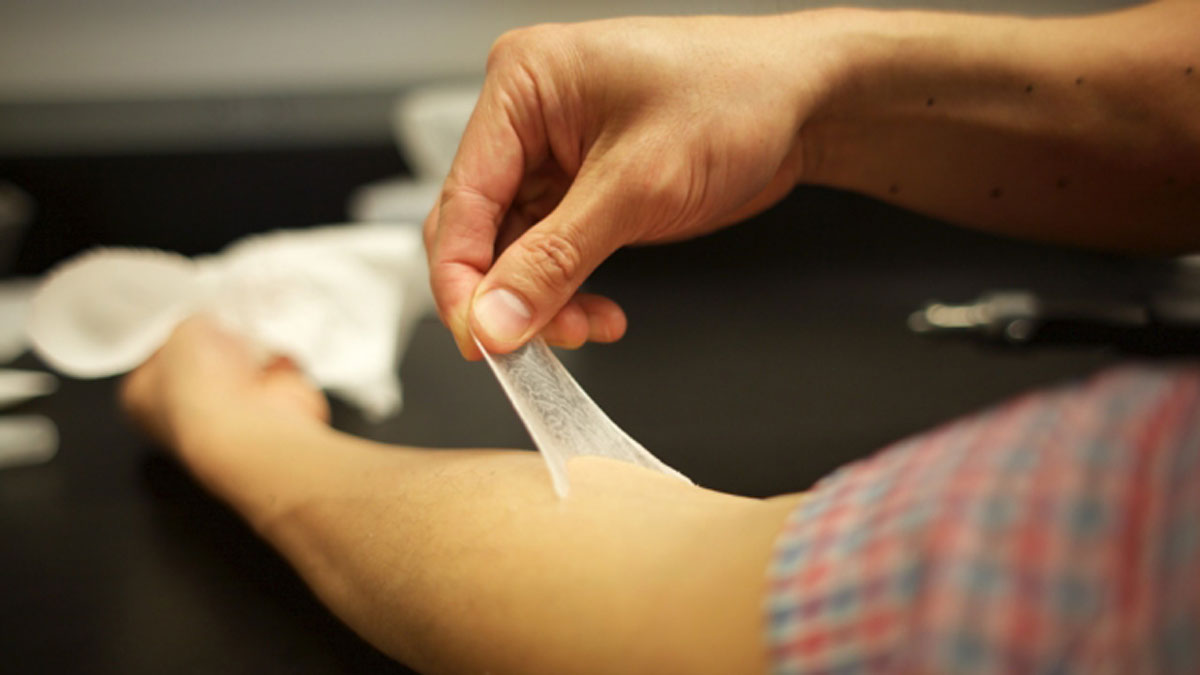XPL: Scientists develop 'second skin' to hide wrinkles
New material 'mimics the properties of youthful skin' with medical and cosmetic benefits

Scientists have created a clear film they say can remove wrinkles and other blemishes from skin.
The synthetic formula, developed by teams from Harvard and the Massachusetts Institute of Technology, "mimics the properties of youthful skin", reports Nature Materials.
"A wearable material layer that restores the normal skin mechanics and appearance is unprecedented and provides a platform to solve other cutaneous problems," the study authors write.
The Week
Escape your echo chamber. Get the facts behind the news, plus analysis from multiple perspectives.

Sign up for The Week's Free Newsletters
From our morning news briefing to a weekly Good News Newsletter, get the best of The Week delivered directly to your inbox.
From our morning news briefing to a weekly Good News Newsletter, get the best of The Week delivered directly to your inbox.
As well as its cosmetic potential, it could be used to treat a whole host of skin diseases such as eczema and psoriasis, as well as protect against sun damage, they add.[[{"type":"media","view_mode":"content_original","fid":"94673","attributes":{"class":"media-image"}}]]
The LA Times describes the material as flexible, breathable, invisible and water-resistant.
Describing the check-list of challenges behind the development, senior author Robert Langer said: "You want it to be clear, so it's sort of like a transparent second skin. You want it to be mechanically strong, you want it to conform to the skin… and obviously, you want it to be safe."
After a decade of research, the authors believe they have found the perfect material, a silicone-based polymer they call XPL.
A free daily email with the biggest news stories of the day – and the best features from TheWeek.com
XPL is so elastic, it can return to its original shape after being stretched by more than 250 per cent, says the study. In comparison, human skin can only manage 180 per cent, while other synthetic materials are considerably less flexible.
Dr Tamara Griffiths, of the British Association of Dermatologists, told the BBC the development was a "very promising approach to a common problem".
"The results [with the polymer film] appear to be comparable to [cosmetic] surgery, without the associated risks," she added.
The researchers have a spin-off company that could eventually market their patented formula but they say more studies are needed before then. The polymer would also need safety approval from regulators.
-
 Trump boosts gas cars in fuel economy rollback
Trump boosts gas cars in fuel economy rollbackspeed read Watering down fuel efficiency standards is another blow to former President Biden’s effort to boost electric vehicles
-
 Hegseth’s Signal chat put troops in peril, probe finds
Hegseth’s Signal chat put troops in peril, probe findsSpeed Read The defense secretary risked the lives of military personnel and violated Pentagon rules, says new report
-
 Texas is trying to become America’s next financial hub
Texas is trying to become America’s next financial hubIn the Spotlight The Lone Star State could soon have three major stock exchanges
-
 Femicide: Italy’s newest crime
Femicide: Italy’s newest crimeThe Explainer Landmark law to criminalise murder of a woman as an ‘act of hatred’ or ‘subjugation’ but critics say Italy is still deeply patriarchal
-
 Brazil’s Bolsonaro behind bars after appeals run out
Brazil’s Bolsonaro behind bars after appeals run outSpeed Read He will serve 27 years in prison
-
 Americans traveling abroad face renewed criticism in the Trump era
Americans traveling abroad face renewed criticism in the Trump eraThe Explainer Some of Trump’s behavior has Americans being questioned
-
 Nigeria confused by Trump invasion threat
Nigeria confused by Trump invasion threatSpeed Read Trump has claimed the country is persecuting Christians
-
 Sanae Takaichi: Japan’s Iron Lady set to be the country’s first woman prime minister
Sanae Takaichi: Japan’s Iron Lady set to be the country’s first woman prime ministerIn the Spotlight Takaichi is a member of Japan’s conservative, nationalist Liberal Democratic Party
-
 Russia is ‘helping China’ prepare for an invasion of Taiwan
Russia is ‘helping China’ prepare for an invasion of TaiwanIn the Spotlight Russia is reportedly allowing China access to military training
-
 Interpol arrests hundreds in Africa-wide sextortion crackdown
Interpol arrests hundreds in Africa-wide sextortion crackdownIN THE SPOTLIGHT A series of stings disrupts major cybercrime operations as law enforcement estimates millions in losses from schemes designed to prey on lonely users
-
 China is silently expanding its influence in American cities
China is silently expanding its influence in American citiesUnder the Radar New York City and San Francisco, among others, have reportedly been targeted